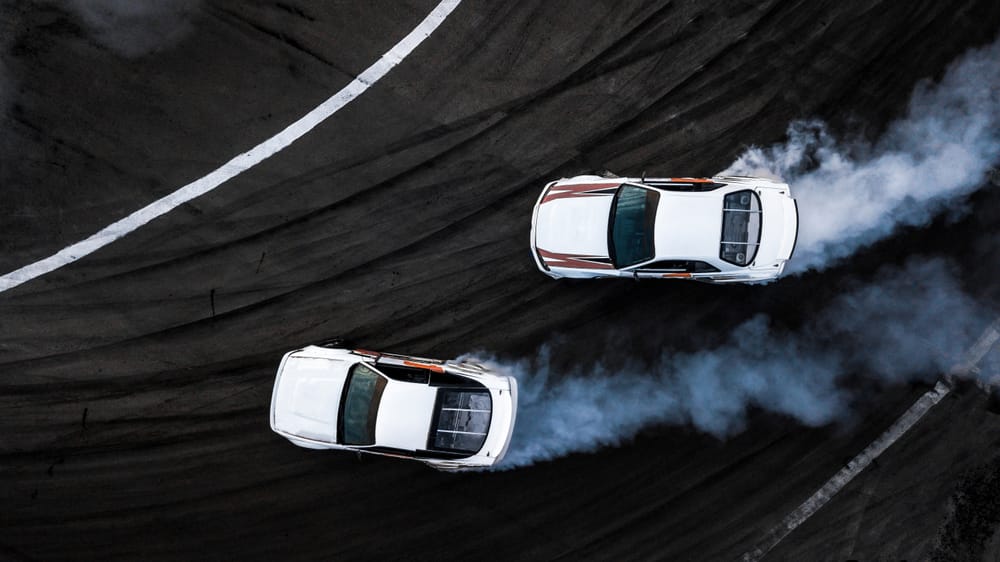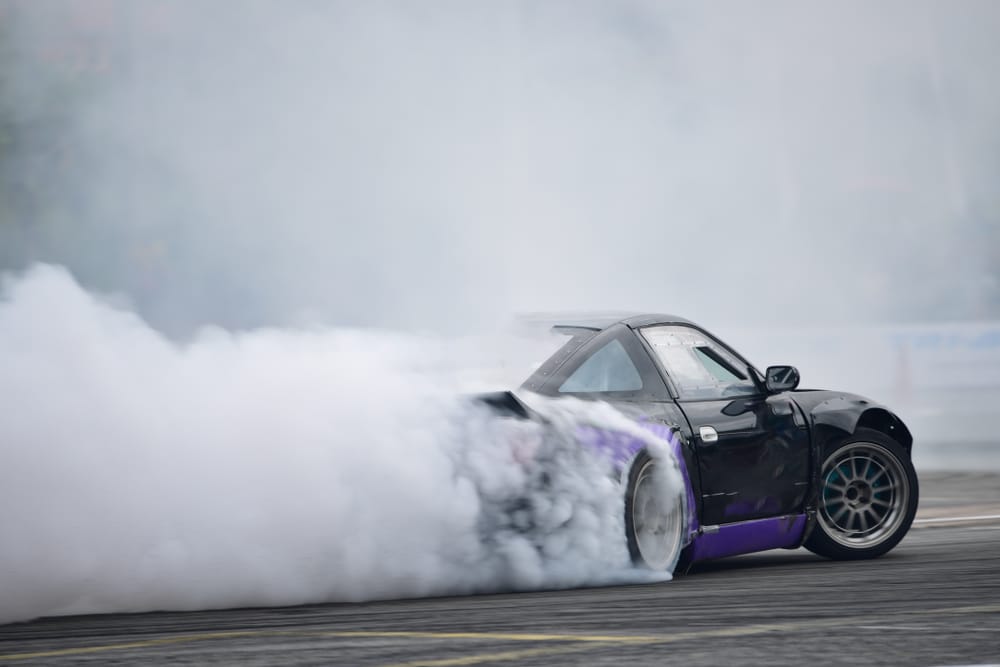As much as drifting a car can look like a lot of fun on a racetrack or in
movies or tv shows, it can have consequences if you try to do it in a car
that isn't built for it.
Drifting in a car can quickly destroy your tires from excess heat and
friction wear. It can also damage your transmission if it isn't
especially tuned for drifting. The engine can also take a beating from
excess heat and lack of oil and coolant flow.
Below are some examples of the possible downsides of drifting in your car.
 Two cars drifting around a corner.
Two cars drifting around a corner.
What Happens To Your Car When You Drift?
Drifting involves running your car at high throttle to get your tires to
lose traction and spin while taking corners.
This causes the car to “float” as it's driven, especially during turns and
rounding corners.
Since drifting requires hard throttling, constantly spinning tires, and
precise steering techniques, it can strain your vehicle considerably.
Does Drifting Ruin Your Transmission?
One major downside of drifting a car is the effect that it can have on the
transmission.
Drifting requires the tires to spin much faster than they normally would
while driving, which causes the transmission to have to work overtime to
accomplish this.
The extra heat and friction generated by all of the force being put on the
gears and other components of the transmission can quickly lead to
transmission damage.
Even a transmission specially geared for drifting is susceptible to this
same wear and tear, with the only plus being that it will probably not wear
out as quickly as a stock transmission.
 Cars are built specifically for drifting.
Cars are built specifically for drifting.
How Do You Drift A Car Without Damaging It?
The honest answer to this question is that there is no easy way to drift in
a car without causing at least some long-term damage.
A car can be equipped with special tires for drifting, but those tires can
be expensive and will still take a beating from the heat and friction of
constant spinning.
You can also make extensive modifications to the engine, drivetrain, and
suspension parts, but the techniques required for drift driving will still
take a heavy toll on those parts.
Drifting in your car is a delicate balance between having fun with it and
causing potentially expensive damage to it.
Can You Drift In A Normal Car?
Most normal cars on the road today aren't built for drifting.
The factory setup of the average modern vehicle is geared toward fuel
efficiency and cheap manufacturing, which means that they often lack the
performance parts necessary for drift driving.
For example, one of the more common problems with drifting with a regular
car is a lack of oil flow once too much strain is put on the engine.
Most oil pumps aren't built to handle the heat and high flow rate needed
for drifting, so they will often lose their ability to pump oil correctly
at a certain point during drift driving.
Will My Car Flip If I Drift?
Drifting not only risks damage to the mechanical components of your car,
but it also has the risk of causing you to wreck your car if you don't know
what you're doing.
It requires technique to steer and keep a car under control, while drifting
involves skill and training.
Since you are intentionally causing your tires to spin without much
traction on the road surface, one wrong move can send your car out of
control and quickly lead to it flipping.
Can You Drift In Normal Tires?
Most factory tires are usually built for traction, so they will naturally
grip the road too well to be much good for drifting.
These tires also contain deep treads that are good for rain channeling but
not ideal for drifting. Drifting tires usually have very shallow treads, so
they can spin more easily.
Conclusion
Drifting is usually better done in a car you can afford to beat up a little
bit.
If you have a car that you don't mind tearing up over time, putting some
money into replacement parts, and potentially wrecking if things go wrong,
then go for it!
Otherwise, leave the drifting to stunt drivers in the movies or
professional racers on a slick track.